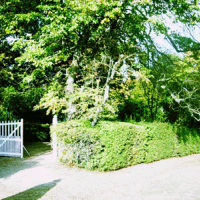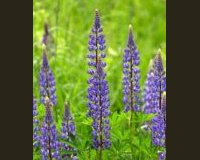accueil site > 45. Archives > Paysage et patrimoine > 01. Teaching materials > 03. Secondary school > Life in the Garden:how do the plants populate their environment (2) (...)
-
45. Archives
-
Paysage et patrimoine
-
01. Fiches pédagogiques
Disciplines
-
01. Teaching materials
Disciplines
-
02. Jardin sans frontière : une école pour développer les compétences -clés en Europe
- 04. Partenaires
- 05. Rencontres transnationales
- 14. À l’école du jardin. Mobilités de formation dans les jardins d’Europe
- 15. À l’école européenne du jardin. Paroles de formateurs sur leurs formations "entre pairs"
- 16. A l’école auropéenne du jardin. Paroles d’apprenants sur leurs mobilités Erasmus+
- 19. Petit glossaire "européen" du jardin
- 20. Dissémination
- 21. Exploitation locale du projet
- 03. Un nouvel Erasmus+ : Le bleu européen comme étendard contre l’exclusion des adultes
-
09. Erasmus+ partenariato
-
Cammini del Blu in Europa
- 01. Incontri transnazionali
- 05. Progetti blu di partners
- 10. Percorsi europei del Blu
- 20. Storie blu
- 40. Disseminazione
- 43. Transcultural Carpet Blue
- 45. Missive blu
- 46. Glossario blu
- 47. Schede didattiche "Pedagogia del colore blu in Europa"
- 48. Illustrazioni delle schede didattiche : Mostra delle opere degli studenti
-
Giardino senza frontiere. Una scuola per lo slivuppo di competenze chiave in Europa
- 04. Partners
- 05. Riunioni transnazionali
- 14. Alla scuola del giardino. Mobilità di formazione nei giardini d’Europa
- 15. Alla scuola del Giardino. Parole di formatori sul loro addestramento "tra pari"
- 16. Alla scuola del giardino. Parole dei discenti sul loro Erasmus + Mobilità
- 19. Piccolo glossario europeo del giardino
-
Cammini del Blu in Europa
-
11. Erasmus+ Partnership
- 01. Transnational Meetings
- 05. Blue Projects of partners
- 07. European roads of the Blue
- 10. Blue stories
- 40. Dissemination
- 43. Transcultural Carpet Blue
- 45. Blue Missives
- 46. Blue Glossary
- 48. Roads of the blue : the file
- 50. Illustrations of the pedagogic file : exhibition of works of learners
-
51. Garden Without Borders : A School for Developing Key Competences in Europe
- 04. Partners
- 05. Transnational meetings
- 14. At Garden School. Training mobilities in the gardens of Europe
- 15. At Garden School. Words of trainers on their "peer-to-peer" training
- 16. At Garden School. Learners’ words about their mobility Erasmus +
- 19. Small European glossary of the garden
- 20. Dissemination
-
11. Partenariats Erasmus+
-
01. Les chemins du bleu en Europe
- 01. Rencontres transnationales
- 05. Projets bleus des partenaires
- 10. Routes du Bleu en Europe ...
- 20. Histoires Bleues
- 40. Dissémination
- 43. Transcultural Carpet Blue
- 45. Missives bleues
- 46. Glossaire bleu
- 47. Formation pédagogique : fiches pédagogiques et référentiel de compétences clés et transversales
- 50. Illustrations des fiches pédagogiques : exposition des travaux des apprenants
-
01. Les chemins du bleu en Europe
- 12. Pedagogic tools
- 17. Fiches pédagogiques
- 17. Schede Pedagogiche
-
01. Fiches pédagogiques
- 05. Livre d’or des formations
- 07. Livre d’or des formations Comenius - Grundtvig
- 10. National
- 20. International
-
Paysage et patrimoine
Life in the Garden:how do the plants populate their environment (2) ?mardi 8 juillet 2008
 Life in the Garden:how do the plants populate their environment (2) ?
Life in the Garden:how do the plants populate their environment (2) ?
![]() flowerless plant breeding
flowerless plant breeding
![]() seedless and sporeless plant breeding
seedless and sporeless plant breeding
NOTIONAL OBJECTIVES :
To know that, among the flowerless plants, organs (spore cases) produce spores that sprout and are at the origin of a new flowerless plant.
METHOD OBJECTIVES :
![]() to understand information from a text and observations
to understand information from a text and observations
![]() to make a preparation and use a microscope
to make a preparation and use a microscope
![]() to create observation drawings
to create observation drawings
MATERIALS :
![]() polypode leaves (fern)
polypode leaves (fern)
![]() prothallus with young fern
prothallus with young fern
![]() microscope
microscope
![]() slides and coverglass
slides and coverglass
![]() droppers
droppers
![]() thin pliers
thin pliers
PROCEDURES :
1. Observe moulds grown in class : notion of spore and spore case
Suggest the pupils to make mouldy a piece of bread for a few days by keeping it damp.
They notice first a white felting covering the bread : it is white mould.
A few days later, with the microscope, they see filaments each ended by a black ball : the spore case (or sporangium). It contains tiny spores.
Set up some spore cases between the slide and the coverglass, without water, then with a water drop.
Sketch the observations.
2. Observe spores and fern spore cases (polypodies)
“The spore cases appear on the lower side of the polypode leaves. Each spore case bursts when it comes to maturity and frees many spores taken away by the wind."
![]() Take with thin pliers a few fern spore cases. Set them up between the slide and the coverglass. Push gently on the coverglass so as to make the spore cases burst and observe them through the microscope.
Take with thin pliers a few fern spore cases. Set them up between the slide and the coverglass. Push gently on the coverglass so as to make the spore cases burst and observe them through the microscope.
![]() Make an observation sketch.
Make an observation sketch.
3. Spore evolution after their dispersal
“Each spore fallen on the ground sprouts and gives birth to a pluricellular filament. It turns quickly into a heart-shaped leaf on which a new fern grows."
From the text, develop a schema of the fern development cycle.
Seedless and sporeless plant breeding
The spore and seed dispersal permits the life environments to become populated. Do plants have other means of colonizing their life space ?
NOTIONAL OBJECTIVES :
To know that plants can multiply without seeds nor spores, thanks to the existence of specialised or non-specialised organs.
METHOD OBJECTIVES :
![]() to understand information from observations and texts
to understand information from observations and texts
![]() to grow plants by cuttings
to grow plants by cuttings
MATERIALS :
![]() plants in pot (geranium, strawberry plant, periwinkle…)
plants in pot (geranium, strawberry plant, periwinkle…)
![]() compost or vermiculite
compost or vermiculite
![]() bottom-pierced flower pots
bottom-pierced flower pots
![]() small dish or bowl
small dish or bowl
PROCEDURES :
![]() Experiment vegetative multiplication without specialised organs
Experiment vegetative multiplication without specialised organs
![]() Cut the end of a young leafy geranium stem (about 10 cm). You have a cutting : a plant element that, after having been split from the plant, gives a new individual. Put the cuttings in a flower pot containing compost or vermiculite.
Cut the end of a young leafy geranium stem (about 10 cm). You have a cutting : a plant element that, after having been split from the plant, gives a new individual. Put the cuttings in a flower pot containing compost or vermiculite.
![]() Water regularly and in a moderate amount. Observe the cutting evolution for several weeks.
Water regularly and in a moderate amount. Observe the cutting evolution for several weeks.
![]() Experiment vegetative multiplication with specialised organs
Experiment vegetative multiplication with specialised organs
“In the summer, the strawberry plants produce runners, sort of aerial creeping stems whose end takes root, giving birth to new strawberry plants."
With the text, colour the schema below :
![]() the strawberry plant at the start in green
the strawberry plant at the start in green
![]() the new strawberry plant in yellow
the new strawberry plant in yellow
![]() the runners in red
the runners in red
Give a title to the sketch.
Write a short text showing the function of the vegetative organs in the environment being populated by the plants.
ASSESSMENT :
1. Observation sketches
For each observation sketch, make an assessment of the following elements :
![]() well-centered drawing with respected proportions
well-centered drawing with respected proportions
![]() continuous and clean lines
continuous and clean lines
![]() right captions with horizontal recall lines
right captions with horizontal recall lines
![]() observation conditions and scale mentioned
observation conditions and scale mentioned
![]() general care
general care
2. Compare a flower plant breeding to the fern breeding by completing the table below :
Fern Flower plants
Sprouting element
Sprout result
3. Complete the following text :
Among plants, the … dispersal and sprouting for flower plants and the … dispersal and sprouting for the flowerless plants permits the colonization and populating of an environment.
However, other means exist like the specialized … formation like the … for example which give birth to new individuals.
Jean-Michel Josse professeur de Sciences de la Vie et de la Terre, Lycée Français Charlemagne de Pointe Noire, Congo Brazzaville


















 Version imprimable
Version imprimable
